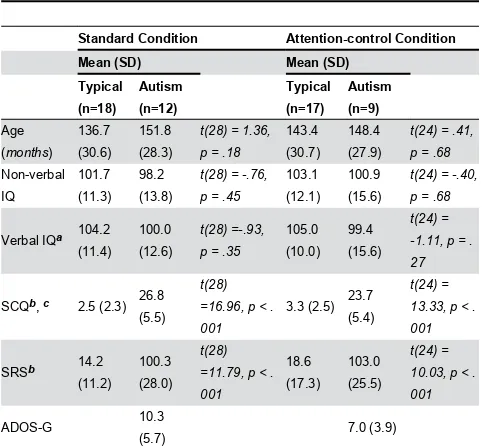Reduced face aftereffects in autism are not due to poor attention
Full text
Figure




Related documents
Grandchildren with both depressed parent and grandparent, who are at particularly high risk for psychopathol- ogy ( Weissman et al. 2005 ), showed greater alpha asymmetry,
The present results obtained employing mitochondrial and RAPD markers suggest the existence of a strong popu- lation di V erentiation between Irish and Iberian localities
The best results were achieved at pH= 5.5, temperature at 60˚C, time of reaction at 100 minutes, sucrose concentration at 60% (w/v), phytoenzymes concentration
Results show that adolescents living in a two-parent household tend to have later sexual initiation, a better sexually related health status and condom consistency than peers
We ran several robustness tests defining various hypotheses. First, we split the sample into pre and post the 2008 financial crisis and investigated for any changes in the
Against this background, the broad objective of this thesis is threefold: (1) to analyze the institutional arrangements for maize seed quality regulation, and uncover the
elderly for the % change in muscle fiber type percentage and mean area from pre to post training no differences were seen be- tween age groups, but in the young subjects the
The Commission's interpretation is also consistent with the purposes of Track A. The plain text of that provision indicates that Congress did not want the BOCs to offer